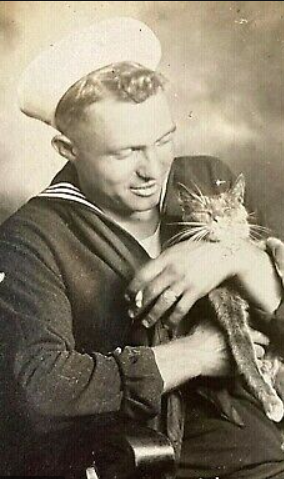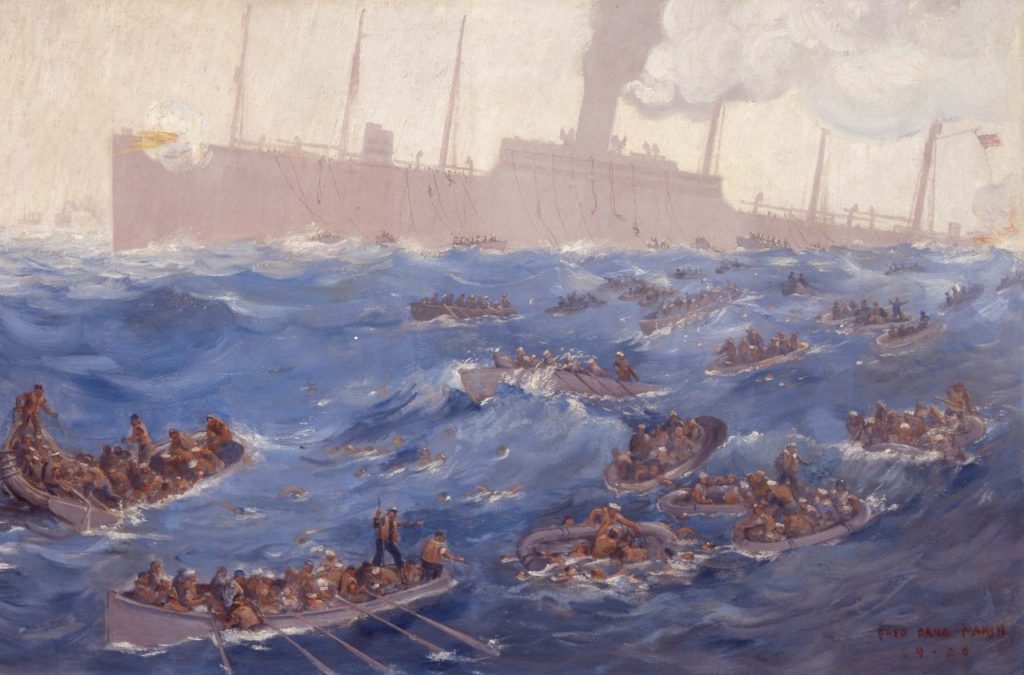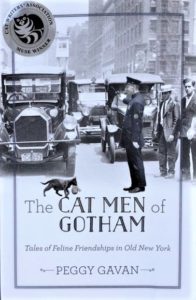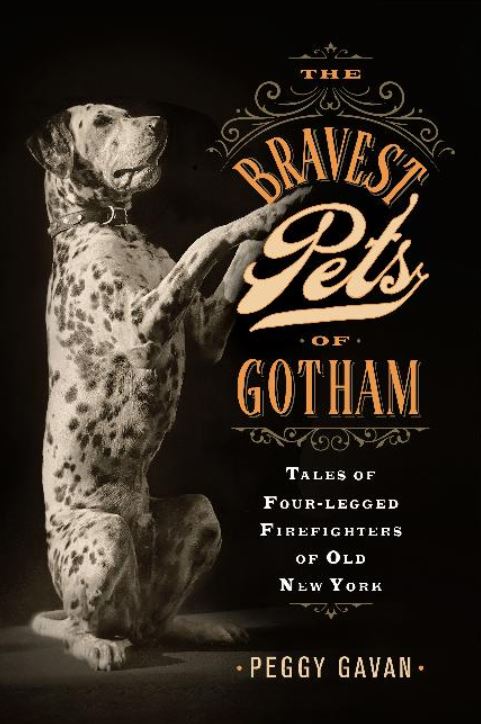
Ten days before the USS President Lincoln troop transport was torpedoed and sunk by a German submarine U-90 while on her way back to the United States, a reporter from the New York Herald paid a visit to the ship at the Hoboken Port of Embarkation. One of the crew members on board the ship during this visit was a ship’s cat named Joe Fife (or Joefife), who had joined the U.S. Navy in August 1917.
Formerly the German steamer President Lincoln of the Hamburg-American Line, the ship was built in Belfast in 1907. Seized in New York Harbor in 1917, it was turned over to the Shipping Board and transferred to the U.S. Navy for operation as a troop transport during World War I.
Prior to being re-commissioned as a Navy troop ship, the USS President Lincoln underwent extensive repairs and conversion at Robins Dry Dock and Repair Company in the Red Hook section of Brooklyn. It was placed under the command of Commander Yates Stirling, Jr., and went into service on July 25, 1917.
According to the Herald reporter, although the ship was stripped of all non-essentials from her days as a passenger vessel, the President Lincoln was “none the less attractive for their absence.”
In place of cabins, smoking rooms, and saloons, there were now large spaces furnished with small tables for cards and games, bright white pine dining tables for each platoon, and enough hammocks to accommodate the 6,000 soldiers on each trans-Atlantic crossing.

Joe Fife the Mascot Cat
During World War I, all of the transport ships and most of the convoying navy vessels had mascots–especially mascots of the feline kind. The USS President Lincoln was no exception.
Joe Fife (probably named for Commodore Joseph Fife, who began his naval career during the Civil War) was described as “a handsome tabby cat of the smoke variety–one of the most aristocratic of the breeds of cat.” He reportedly joined the ship shortly after the liner was placed into service as a troop transport.
As the story goes, just after the ship went into service, there was some discussion in the officers’ mess about acquiring a mascot. Paymaster J.F. Loba was deputized to to “procure the most unusual specimen possible of any well known animal and bring it on board to supply the aching void.” (Apparently, the only animals the men would not consider were apes.)
Having received his assignment, Paymaster Loba started on his mascot quest. The “cunning paymaster” reportedly had a fondness for cats, so right away he knew which kind of animal he was going to select. He also knew just where to find a great cat–and so up to the Bronx he went.
Apparently, Loba had relatives in Kingsbridge, with whom he would occasionally call on when he was on shore leave. During these visits, he often saw, from a distance, “the very king of cats.” In no time at all, he made his acquaintance with Joe Fife, “a splendid silver tabby of registered stock having a coat of beautiful stripes on a smoke background.”

Now, it was one thing to actually find this perfect mascot in the Bronx. Persuading the cat’s adoring mistress to release him from her arms was another thing all together.
According to the nationally published story, Paymaster Loba somehow convinced the woman that it was her patriotic duty to allow Joe Fife to join the navy (reportedly, he got her to believe that she had raised her cat to be a sailor who would serve his country.)
Joe Fife adjusted to his new life at sea fairly quickly. A day or two after he had been inducted into his cabin, he meticulously investigated every dark corner of the ship, made friends with all on board “irrespective of rank,” and carried out “his reputation as a great jollier.” He was a faithful mascot and never deserted the ship–well, except for that one time…
One night before the ship was set to sail, Joe Fife deserted the navy. In other words, the cat went AWOL.

Some suggested the ship cat could smell the upcoming fall cat show in the air and decided to leave in case the ship did not return to port in time for the event. Whatever the reason, two days after his disappearance, a “disreputable cat with a disheveled tail tried to creep unnoticed into the pretty hallway of a villa in Kingsbridge.” (Mind you, the ship was in Hoboken, NJ, when Joe Fife left, so I have no idea how the cat made it across the river to the Bronx!)

Welcoming her soldier cat with love and affection, the mistress cleaned and brushed Joe Fife until he was back to being beautiful. A few weeks later, “he held his usual court at the cat show,” where he won a blue ribbon and two special prizes. As the unnamed mistress told Paymaster Loba, she truly believed that Joe Fife ran away for no other reason than to be in the cat show as usual and capture the prizes.
Although Joe Fife seemed at first to have forgotten his brief flirtation with a life at sea, it wasn’t long before he was back in the navy. Somehow, the prize-winning cat made it back to the ship “gayly and as if returning to his favorite quarters.”
During his remaining time on the President Lincoln, Joe Fife thoroughly enjoyed the seaman’s life. He especially loved resting upon the muzzle of the U-boat rifle, which, as the Herald reporter noted, “would indicate his desire to gain the complete technical equipment of a first-class marine.”
Sadly, Joe Fife didn’t have a long life as the ship’s mascot. On May 31, 1918, during its fifth return trip to New York, the USS President Lincoln was struck by three torpedoes and sank in about 20 minutes. Of the 715 humans aboard, 26 men (3 officers, 23 enlisted) were killed during the explosions; Lieutenant Edouard Izac was taken aboard U–90 as prisoner.
Late that night, after 18 hours drifting in the choppy seas, survivors were rescued from lifeboats by destroyers Warrington and Smith. They arrived back in France on June 2.
The national news did not report the status of Joe Fife.


Did You Know? Hoboken Port of Embarkation

During World War I, the command responsible for the movement of troops and supplies from the United States to overseas commands was called the Hoboken Port of Embarkation. Its headquarters were in the seized Hamburg American Line and North German Lloyd Steamship facilities in Hoboken, New Jersey.
The first commander of the Hoboken Port of Embarkation was Major General David Shanks. Operating from the luxurious offices of the Lloyd Steamship lines, he recruited 2,500 officers to manage the twelve piers at Hoboken, eight piers in Brooklyn, and three piers in Manhattan. During WWI, he moved 1.7 million men overseas and was later awarded the Distinguished Service Medal by President Wilson.
It was at the Hoboken Port of Embarkation that a reporter from the New York Herald met Joe Fife the mascot cat only 10 days before the USS President Lincoln sank off the coast of France.




